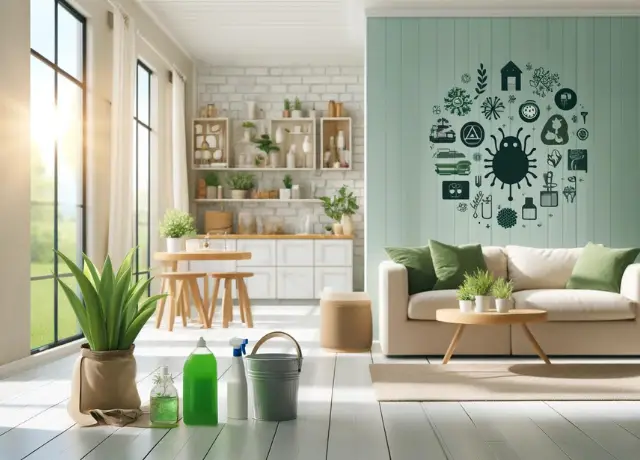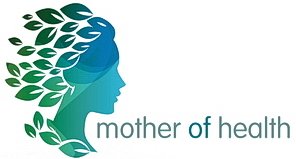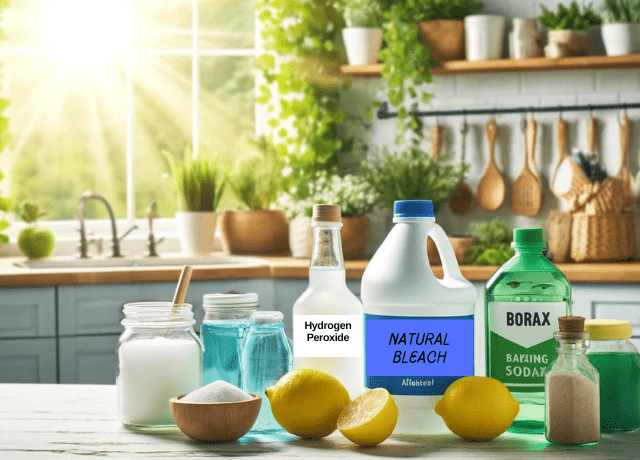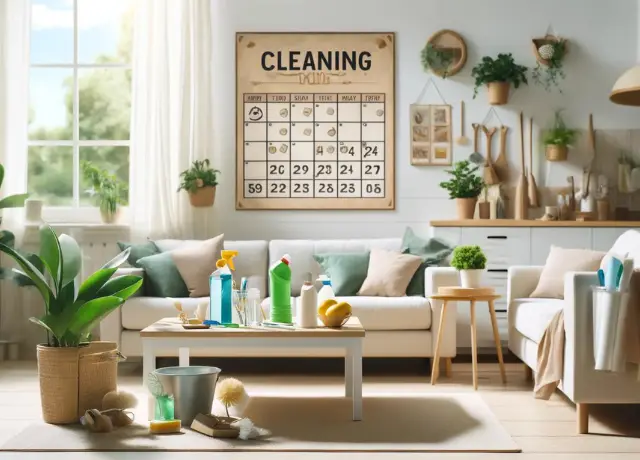Over the past century, bleach has been a go-to cleaning product in many households. However, its negative impact on health and the environment has led to a search for safer alternatives. This informative post explores 10 natural bleach alternatives to help you achieve a non-toxic home.
From hydrogen peroxide to lemon juice, these alternatives clean effectively and protect your family and the environment. Say goodbye to harmful chemicals and embrace a healthier, greener approach to cleaning with these natural solutions.


Key Takeaways:
- Natural Alternatives: Various natural alternatives to bleach can be used for cleaning, disinfecting, and whitening in a non-toxic way.
- Health Risks: Bleach poses health risks such as respiratory problems, skin irritation, allergic reactions, and suppressed immune response, especially for children and people with sensitivities.
- Environmental Concerns: Bleach can have environmental implications, leading to toxic chemical formation and contaminating water sources affecting wildlife and human health.
- Bleach Alternatives: Options like hydrogen peroxide, white vinegar, baking soda, borax, lemon juice, sunlight, and more offer effective and safer alternatives for cleaning and disinfecting.
Understanding Bleach
Bleach, primarily sodium hypochlorite, is a common household disinfectant and whitener. This clear, slightly yellowish liquid with a strong smell is diluted with water because it can corrode certain materials.
How Bleach Functions
Bleach is used for disinfecting and stain removal due to its oxidative and antimicrobial properties. Its active ingredient, sodium hypochlorite, is a powerful oxidizing agent. Through oxidation, it breaks down stains and contaminants by transferring oxygen molecules. Additionally, bleach eliminates bacteria, viruses, and fungi by disrupting their structure and key enzymes.
Bleach: A Breakdown of Its Chemical Makeup
Furthermore, bleach’s active ingredient, sodium hypochlorite, is a powerful oxidizing agent. It alters substances by transferring oxygen molecules and breaking down stains and contaminants. It is highly effective at killing many microorganisms, including bacteria, viruses, and fungi, making it a common household disinfectant.
Moreover, bleach can break down pigments that discolor fabrics and surfaces, providing a whitening effect in laundry products.
The Health Risks Associated with Bleach Use
Respiratory Issues
Dangers arise when bleach is mixed with other cleaning products, producing toxic fumes like chlorine gas. Prolonged exposure to these fumes can lead to respiratory issues such as coughing and wheezing, especially for those with pre-existing conditions like asthma or COPD. Therefore, it is crucial to avoid mixing bleach with other chemicals and to use proper ventilation when using it.
Skin and Eye Irritations
Direct contact with undiluted bleach or its fumes can cause skin and eye irritation, leading to redness, burning, or even chemical burns. In severe cases, immediate medical attention is necessary to prevent permanent damage, such as blindness from eye exposure. It is important to handle bleach with caution, using protective gear such as gloves and goggles.
Allergic Responses
People hypersensitive or allergic to bleach may experience allergic reactions like skin rashes or hives upon exposure. Seeking medical help promptly is crucial to prevent further complications. Therefore, it is necessary to be aware of any allergies before using bleach or products containing bleach.
Weakened Immune System
Moreover, research suggests that children exposed to bleach in home cleaning are at increased risk of respiratory and other infections. Passive exposure may weaken their immune response, making them more susceptible to illnesses. This highlights the importance of using bleach with caution in homes with children.
Ingestion by Children or Pets
Pets and children face serious health risks if bleach is ingested, as it can cause chemical burns in the digestive tract. Immediate medical attention is crucial to prevent life-threatening complications. Hence, it is necessary to store bleach and other household cleaners out of reach of children and pets.
Environmental Concerns
Finally, concerns about perchlorate formation in stored bleach raise environmental alarms. Perchlorate, a toxic chemical found in drinking water, can impact thyroid function and interfere with child development. The Environmental Working Group emphasizes the need for safer alternatives to bleach to protect water quality and environmental health.
The Impact of Bleach on the Environment
Water Pollution
Firstly, stored bleach can form a toxic chemical called perchlorate, which can contaminate drinking water. According to the Environmental Working Group, perchlorate has made its way into irrigation water and can interfere with child development if consumed through produce or dairy products. Therefore, it is essential to be mindful of how bleach is stored and used to prevent water pollution.
Soil Contamination
Water used to clean with bleach may carry chemicals that seep into the soil, affecting its quality. Although the Environmental Protection Agency considers bleach safe for use, excessive usage can contribute to soil contamination, having detrimental effects on plant growth and soil organisms. Additionally, frequent use of harsh chemicals like bleach can deplete beneficial microorganisms in the soil, disrupting the natural balance and fertility of the land.
Air Pollution
Furthermore, bleach can contribute to air pollution, impacting human health. Mixing bleach with other cleaning products can release toxic fumes, including chlorine gas, posing respiratory hazards. This can lead to breathing difficulties and, in severe cases, chemical pneumonia.
Even bleach fumes alone can cause respiratory issues such as coughing, wheezing, and shortness of breath. Consequently, these health risks not only affect individuals but also impact the overall air quality in indoor spaces, posing a threat to both human health and the environment.
Why You Should Consider Natural Bleach Alternatives
The Importance of a Non-Toxic Home
Firstly, for a healthier living environment, it's crucial to switch to natural bleach alternatives. Traditional bleach can pose health risks, including respiratory issues, skin irritation, and allergic reactions. By opting for non-toxic alternatives, you create a safer space for your family.
The Benefits of Eco-Friendly Cleaning
Moreover, cleaning with eco-friendly alternatives promotes a safer home and benefits the environment. Harsh chemicals in traditional cleaning products can harm aquatic life and pollute water sources. Choosing natural options like hydrogen peroxide, vinegar, or lemon juice can reduce your carbon footprint and contribute to a more sustainable lifestyle.
Additionally, embracing eco-friendly cleaning practices benefits both your health and the environment. By incorporating natural bleach alternatives like baking soda, borax, or sunlight, you can effectively clean, disinfect, and whiten your surroundings without compromising safety. Making this switch is a simple yet impactful step towards creating a non-toxic and eco-conscious home.
10 Best Natural Bleach Alternatives
1. Seventh Generation Professional Non Chlorine Bleach
Seventh Generation Professional Non-Chlorine Bleach is a health-conscious alternative to traditional bleach. It uses hydrogen peroxide, breaking down into water and oxygen, leaving no harmful residues. This product produces zero fumes, is biodegradable, and is gentler on fabrics and skin. Despite its mildness, it effectively removes stains, whitens clothes, and disinfects surfaces, providing a versatile and eco-friendly cleaning solution.
2. Truly Free Home Natural Cleaner
Truly Free Natural Stain Remover with Water-Activated Enzymes is a powerful, eco-friendly cleaning product designed to tackle tough stains and odors without harsh chemicals. It uses enzymes to break down complex molecules from food, blood, grass, and pet stains into smaller particles that can be easily washed away. This product effectively removes stains and odors while being gentle on fabrics and safe for the environment.
As a natural substitute for toxic bleach, it avoids harmful fumes and potential skin irritations. It is biodegradable and non-toxic, ensuring it doesn't contribute to environmental pollution or pose health risks. This versatile cleaner provides a safe, effective, and sustainable solution for maintaining a clean and healthy home.
3. Hydrogen Peroxide
Moreover, most households have a bottle of hydrogen peroxide, which can serve as a great bleach alternative. With its stain-removing and whitening properties, hydrogen peroxide can be used in laundry and for disinfecting various surfaces around the house. It's a common yet powerful cleaner that can effectively replace bleach in your cleaning routine.
4. DIY Oxiclean
Additionally, combining hydrogen peroxide and washing soda creates a DIY Oxiclean solution that deep cleans tough stains without chlorine bleach. This eco-friendly alternative is easy to make and highly effective. By using this homemade Oxiclean, you can keep your clothes and household items clean and odor-free without compromising health or the environment.
5. White Vinegar
Furthermore, white vinegar is a versatile and natural alternative to bleach. Its antibacterial properties make it ideal for disinfecting surfaces, while its ability to eliminate odors and dissolve stains makes it a valuable addition to any cleaning arsenal. Incorporating white vinegar into your cleaning regimen helps achieve a fresh, non-toxic home environment.
6. Baking Soda
Additionally, baking soda, known for its scrubbing and deodorizing capabilities, is a fantastic bleach alternative. It can effectively clean and remove stains from various surfaces. Whether used as a paste for stain removal or sprinkled on surfaces for a thorough scrub, baking soda is a natural and eco-friendly option for maintaining a clean, non-toxic home.
7. Borax
Furthermore, Borax is another safe substitute for bleach. It can brighten whites and disinfect surfaces, offering a natural and effective solution for a non-toxic home. Using Borax in your laundry and cleaning practices helps achieve a clean and healthy living environment without harsh chemicals.
8. Lemon Juice
Moreover, lemon juice is a powerhouse natural cleaner due to its citric acid content, which provides bleaching properties. It can be used for pre-treating stains in laundry or disinfecting surfaces in the kitchen and bathroom. Lemon juice is a versatile alternative to bleach that leaves a fresh and invigorating scent, promoting a naturally clean and non-toxic home environment.
9. Sunlight
Additionally, many people underestimate the power of sunlight as a natural bleach alternative. The ultraviolet (UV) rays in sunlight can naturally whiten, disinfect, and deodorize fabrics and surfaces.
Simply clean or wet the items, then place them in direct sunlight for a few hours until dry. Sunlight is effective and environmentally friendly, making it a great option for a non-toxic home cleaning routine.
10. Norwex Microfiber
Finally, an innovative option for cleaning without bleach is the use of Norwex microfiber cloths and sponges embedded with silver ion Baclock technology. These cloths effectively remove dirt, bacteria, and germs using only water, reducing the need for harsh chemicals. With the added benefit of antibacterial properties, Norwex microfiber cloths provide a safe and eco-friendly alternative for achieving a squeaky-clean home.
How to Choose the Right Natural Bleach Alternative
Considering Your Cleaning Needs
It's important to consider your specific cleaning needs when choosing a natural bleach alternative. Whether you're looking to brighten whites, eliminate stains, or sanitize surfaces, understanding what you need from a cleaner will help you make the right choice.
Evaluating the Effectiveness of Each Alternative
It's essential to evaluate the effectiveness of each natural bleach alternative. Consider factors like disinfecting power, stain removal capabilities, and environmental impact when choosing the right alternative for your home.
For instance, cleaning your surfaces with hydrogen peroxide can help disinfect and brighten fabrics. On the other hand, using white vinegar as a cleaning agent offers gentle antibacterial properties while removing odors. By carefully evaluating the effectiveness of each alternative, you can make informed decisions for a non-toxic and eco-friendly home.
Tips for Using Natural Bleach Alternatives
General Tips
- Test a Small Area: Before full application, test a small area to ensure compatibility with the surface.
- Follow Dilution Ratios: Adhere to recommended dilution ratios to avoid damage and maximize effectiveness.
- Store Safely: Keep alternative bleach products out of reach of children and pets.
- Read Instructions: Always read and follow the manufacturer's instructions for proper use.
Dilution Ratios and Application Methods
Dilution Ratios and Application Methods
Bleach alternatives may require different dilution ratios and application methods depending on the surface or type of stain. Always follow the manufacturer's instructions for the best results to ensure effectiveness and safety.
Precautions and Safety Measures
Understanding precautions and safety measures is crucial when using natural bleach alternatives to protect yourself and your home. Key safety measures include:
- Proper Ventilation: Ensure adequate ventilation when using these alternatives.
- Avoid Mixing Products: Do not mix different cleaning products.
- Protective Gear: Wear protective gloves and eyewear.
- Safe Storage: Keep products out of reach of children and pets.
By following these tips, you can effectively and safely use natural bleach alternatives in your cleaning routine.
By following these tips, you can effectively and safely use natural bleach alternatives in your cleaning routine.
How/When to Disinfect Your Home

To maintain a healthy home use mild, non-toxic cleaning agents and disinfectants selectively. Focus on high-touch surfaces and areas with a higher risk of pathogens, such as bathroom fixtures and kitchen counters.
Encourage proper hand washing as the primary defense against germs to reduce the need for frequent disinfectant use. By targeting disinfecting efforts and avoiding unnecessary or excessive use, you can keep your home microbiome in balance.
Maintaining a Healthy Balance of Microorganisms
Your home microbiome is a diverse community of microorganisms that coexist with you in your home, impacting respiratory health, allergies, and immune system development. Exposure to a variety of microbes can contribute to a better immune response and reduce the risk of allergies.
Overusing disinfectants can disrupt this balance, so it's important to use them selectively and focus on proper hand hygiene as the first line of defense against germs.
Common Misconceptions About Natural Bleach Alternatives
Debunking Myths About Effectiveness
With the rise in popularity of natural bleach alternatives, there are common misconceptions about their effectiveness compared to traditional bleach.
However, many natural alternatives, such as hydrogen peroxide, baking soda, and white vinegar, have been proven to be just as effective at disinfecting and cleaning surfaces. These alternatives can tackle tough stains, disinfect, and brighten whites without the harmful side effects associated with bleach.
Addressing Concerns About Cost and Convenience
An important concern for considering natural bleach alternatives is the perceived cost and convenience compared to traditional bleach.
However, natural alternatives like hydrogen peroxide and white vinegar are often more affordable and readily available than store-bought bleach products. Additionally, many natural alternatives can be easily incorporated into your cleaning routine, offering a non-toxic and sustainable solution for a cleaner home.
Making the Switch to Natural Bleach Alternatives
Gradual Transition vs. Cold Turkey
An important aspect of transitioning to natural bleach alternatives is the approach you take. Gradually phasing out traditional bleach and incorporating natural alternatives can help ease the process.
Start by replacing one cleaning product at a time with a natural alternative, such as hydrogen peroxide or white vinegar. This gradual shift allows you to adjust to new products and methods without feeling overwhelmed.
Overcoming Resistance to Change
One common barrier to embracing natural bleach alternatives is resistance to change. Many people are accustomed to the convenience and effectiveness of traditional bleach products.
However, understanding the health and environmental risks associated with bleach can motivate a shift towards natural alternatives. Educating yourself on the benefits of natural cleaning products and their efficacy in maintaining a clean home can help overcome resistance to change.
Making small changes in your cleaning routine, such as swapping out bleach for hydrogen peroxide or baking soda, can gradually shift towards natural alternatives. It may take time to adjust to new products and methods, but the benefits to your health and the environment make it a worthwhile endeavor.
Creating a Chemical-Free Routine
Scheduling Regular Cleaning Sessions
After learning about the potential health dangers of using bleach, it's essential to establish a non-toxic cleaning routine for a safer home environment. Scheduling regular cleaning sessions helps maintain a clean and healthy living space without relying on harsh chemicals. Set aside specific times each week to tackle cleaning tasks, ensuring that every area of your home receives attention.
Organizing Your Cleaning Supplies
Organizing your cleaning supplies is crucial for maintaining a non-toxic home. Keeping your cleaning supplies organized will make the process more efficient and effective. Designate a specific area for your supplies, ensuring easy access when needed. Consider using natural cleaning products and bleach alternatives, such as hydrogen peroxide, vinegar, or baking soda, to create a healthier cleaning environment for you and your family.
Additional Resources for a Non-Toxic Home
Recommended Reading and Online Resources
There are many resources available for those seeking to create a non-toxic home environment. From books on natural cleaning solutions to online blogs dedicated to eco-friendly living, there is a wealth of information available. Explore titles like “The Naturally Clean Home” by Karyn Siegel-Maier.
Online communities and forums bring eco-conscious individuals together to share their experiences and knowledge on green cleaning practices. From swapping homemade cleaning recipes to discussing the latest in sustainable cleaning products, these platforms offer a supportive environment for those looking to make their homes healthier and more environmentally friendly.
Additional resources, such as Facebook groups like “Eco-Friendly Home Cleaning Tips” and websites like “Green Living Answers,” provide a place to connect, learn, and inspire one another on the journey towards a non-toxic home.
Final Thoughts on Natural Bleach Alternatives
Many cleaning products on the market today contain harsh chemicals that can be harmful to both our health and the environment, and bleach is no exception. The good news is that there are plenty of natural bleach alternatives that can help you achieve a squeaky-clean home without the negative side effects.
As discussed, bleach can have detrimental effects on our respiratory health, skin, and even our immune system. By switching to natural alternatives like hydrogen peroxide, lemon juice, or sunlight, you can avoid these risks while still achieving the same level of cleanliness.
It's important to keep in mind the concept of the home microbiome—the diverse community of microorganisms that inhabit our living spaces. By using mild, non-toxic cleaning agents and reserving disinfectants for specific situations, you can maintain a healthy balance of microorganisms in your home.
Excessive use of disinfectants can lead to microbial resistance, making it harder to effectively combat harmful pathogens in the future. By using natural bleach alternatives selectively and focusing on high-touch areas, you can create a safer and more sustainable living environment for you and your family.
These natural bleach alternatives are not only effective but also affordable and easy to use. By making the switch to non-toxic cleaning products, you can protect your health and contribute to a cleaner, greener planet. So next time you reach for that bottle of bleach, consider trying out one of these natural alternatives instead.
Frequently Asked Questions About Natural Bleach Alternatives for a Non-Toxic Home
Q: What are natural bleach alternatives?
A: Natural bleach alternatives are non-toxic substances that can be used for cleaning, disinfecting, and whitening in place of traditional bleach.
Q: Why should I consider natural bleach alternatives for my home?
A: Using natural bleach alternatives can help reduce exposure to harmful chemicals, protect the environment, and promote a healthier living space for you and your family.
Q: What are some common natural bleach alternatives?
A: Some common natural bleach alternatives include hydrogen peroxide, white vinegar, baking soda, lemon juice, and sunlight.
Q: How do natural bleach alternatives work?
A: Natural bleach alternatives work through various mechanisms such as oxidation, antimicrobial properties, and natural acids that break down stains, disinfect surfaces, and whiten fabrics.
Q: Are natural bleach alternatives as effective as traditional bleach?
A: While natural bleach alternatives may not always be as strong as traditional bleach, they can be effective for everyday cleaning tasks and are safer for you and the environment.
Q: Can I use natural bleach alternatives for laundry?
A: Yes, many natural bleach alternatives like hydrogen peroxide, baking soda, and lemon juice can be used for whitening and brightening laundry without the use of harsh chemicals.
Q: How can I incorporate natural bleach alternatives into my cleaning routine?
A: You can use natural bleach alternatives in various ways, such as making DIY cleaning solutions, pre-treating stains, and disinfecting surfaces to create a non-toxic home environment.



